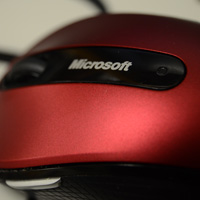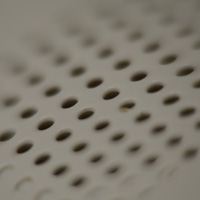A useful general intro tutorial video: Macro Photography by Tony Northrup
Discusses three basic techniques for shooting close-up imagery, including inexpensive diopter lenses/filters.Adorama Macro Photography techniques and equipment.
Emphasis in this video is on professional level equipment and techniques — equipment discussed: macro lens, tripod, cable release, macro flash (ring flash). Tactics disusses: manual focus, shallow depth of field and aperture.Tutorials: Cambridge In Color Macro Intro | PictureCorrect Macro Intro | SmashingMagazine Examples
Photo.Net Macro Intro |
Diopter Lens/Filter
"Close-up lenses are special lenses that screw onto the front of your lens like an ordinary camera lens filter. They're basically just a sophisticated magnifying glass that's placed between your lens and the subject. It's for this reason that they're also often called "close-up filters.""
(from www.cambridgeincolour.com)Cambridge Color offers a thorough description of the optics, effects, pros and cons of diopter lenses.
Extension Tube
"An extension tube is simply a hollow cylinder that fits in between your camera and lens, causing the lens to move further from the sensor. This additional distance allows your lens to focus more closely, which in turn provides more magnification capability. Unlike most lens accessories, extension tubes don't add any extra optics, and are therefore relatively inexpensive, simple devices."
(from www.cambridgeincolour.com)Cambridge Color offers a thorough description of the optics, effects, pros and cons of extension tubes.
Macro Lens
Minimum Focus DistanceEvery lens has a minimum focus distance — when you try to photograph subjects that are closer to the lens than that distance, you will not be able to get a sharp focus.
Depth of Field:
At very close focus distance, depth of field is very shallow. Thus, focusing accurately become critical to successful images.
In the images above, note how narrow is the field of focus. The Amazon card has only the "a" in focus. The last image is of a phone's mouthpiece — note that only a single row of holes is sharp, the rest, though only a few millimeters nearer or farther, are progressively further out of focus.
When using Diopter lenses and extension tubes, depth of field can be very, very shallow. Very.
Only a very specific depth will be sharp. Thus, focus control is critical — you will either have to, or want to, manually focus. At close distances, leaning forward or back even a fraction of an inch will markedly alter focus quality. That's why a tripod is recommended.Cable Release or Remote
Caple releases and remote controls allow you to expose an image without touching the camera. Why is that helpful? Because when you touch the camera, or, more particularly, when you push the shutter button, you invariably jar or shake the camera slightly — and sometime a lot. That is a problem with closeup photography.
Cable releases
Remote controls are small radio controls — about the size of a keychain or your auto's door-lock remote. These vary in range — some will work only from 15 feet or so away and must be positioned in front of the camera in order for the IR signal to reach the camera's reciever. Other remotes will operate from 100 feet away. These are handy for those vacation shots that you want to be in, along with the fabulous scenery behind you.
Timer: Another technique that all DSLRs offer, is the self-timer. You can set you camera to fire, say, 10 seconds after you press the shutter. That way there is no camera shake due to your actual contact with the camera.
Tripod
Because of critical focus distances common to macro and close-up photography, a tripod is sometimes essential, and often recommended.
Ring Light


